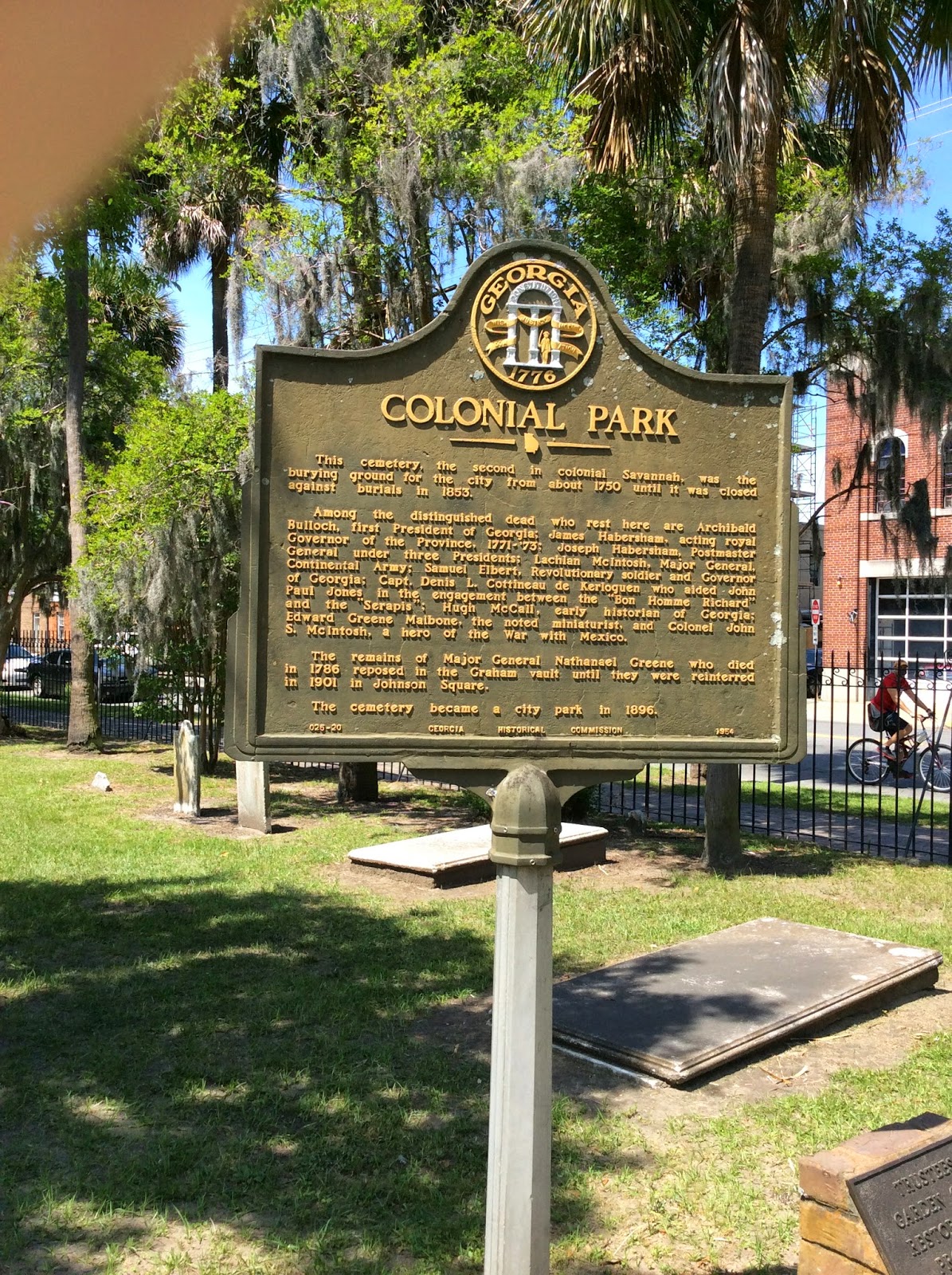We all share a few common human experiences. One of those we will all have sooner or later is dying. Where do we go from here? Today we are going to stop by a place that welcomed about 9,000 residents of Savannah from about 1750 to 1853 or so. It is Colonial Park Cemetery. Many of the South's and early America's notables take the dirt nap.
This is the gateway to Colonial Park Cemetery placed by the Daughters of the American Revolution (DAR).
When you do research on Colonial Park Cemetery you find some disagreement on how many are buried here. The numbers I have seen vary from 8,000 to over 10,000. Part of the problem may be that all the graves are not contained within the gates of the cemetery. The original cemetery extends out into Abercorn Street so when you drive down the street or walk down the sidewalk you are traversing the graves of some buried in Colonial Park Cemetery. Savannah claims to be the most haunted city in America and it may have something to do with the city's willingness to pave over graveyards without moving the bodies. Yes, I said graveyards, plural. This is not the only one that has been partially or completely paved over.
In future posts we will meet a few of the notable buried here. Today I will share a couple. The first was Nathanael Greene. He was laid to rest in Colonial Cemetery after his death in 1786. When they decided to move his body to Johnson Square at the Greene Monument there was some confusion about where his body was actually located in Colonial Cemetery. It was found in the Graham family vault. It just goes to show you even when you are a famous war hero sometimes the sands of time create confusion. One of the most notable burials is Button Gwinnett. You may remember from the post on Leopold's that the shop was originally located on Gwinnett Street. Now you will know how the street was named. Mr. Gwinnett was one of the signers of the Declaration of Independence. He died on May 19, 1777 as the result of a duel with Mr. Lachlan McIntosh. The two men were involved in an argument about who was right regarding an invasion into Florida. A couple of things come to mind. First, I am glad we no longer take our politics quite so seriously. Second, it would seem kind of tough to stand a few feet apart and shoot at another person. Sometime in the future I hope to relay a story of duelists in the Savannah area who took four attempts before one participant was struck in the heart and killed. One would think at two or three rationale thought would kick in and they would give up the effort. It is not like you fired quickly. Shoot, wadding, powder, shot, tamp, cock hammer, pull trigger. The process would take 15 seconds or so between shots.
Yellow fever is part of the reason there is some confustion over the number of burials in Colonial Park Cemetery. The disease from time to time ravaged the population of the area with one of the worst outbreaks occurring in 1820. The northern end of Colonial Cemetery holds a mass grave of almost 700 who died during that epidemic. The exact number is rumored to be 666 which is a delight to the ghost tour companies. As a side note yellow fever has a family connection for me. My great-great-great-great grandfather Hosea Parsons died of yellow fever in New Orleans in 1803.
Savannah was the final stop during the Civil War for General Sherman's march to the sea. Many of the cities along the way were destroyed and burned to the ground. Savannah did not suffer that fate. General Sherman gifted the city to President Lincoln in 1864 to celebrate Christmas. Colonial Cemetery did suffer some damage from the Union troops as they used it as a camping area. A few of the headstones had dates altered showing some people lived over 1,000 years. Some were altered to show the person died before they were born. It was simply bored soldiers looking for something to occupy their time.
The cemetery stones here are generally made of a softer stone and the years have worn away much of what is written on them. There a many brass plaques throughout the cemetery to assist in recognizing the famous folks who were laid to rest within its gates. In future posts we will walk the path of early American history and learn a bit about these honored dead.


No comments:
Post a Comment